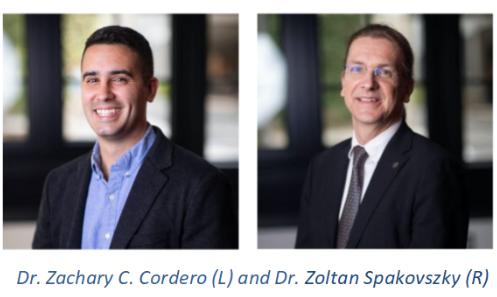MIT to Develop Aerospace Course with Concepts NREC’s Software Suite
The course will use the Agile Engineering Design System (AEDS) and Advanced Rotating Machine Dynamics tools (ARMD) to design and develop an electric turbopump for a notional rocket engine.
Concepts NREC and the Massachusetts Institute of Technology (MIT) are collaborating to implement turbomachinery design, engineering, and analysis software tools into a new course titled “Advanced Manufacturing for Aerospace Engineers”, scheduled to debut fall 2024. The course is designed and will be taught by Dr. Zachary Cordero and Dr. Zoltán Spakovsky—it is a project-based subject that requires students to design, build, and test an electric turbopump for a notional rocket engine.
"We are thrilled to support MIT and Dr. Spakovszky in developing the next generation of aerospace engineers,” said Dr. Peter Weitzman, President of Software Sales and Product Development at Concepts NREC. "These students will gain hands-on experience with tools and strategies to solve the most demanding turbomachinery challenges that will arise in their careers."

AEDS and ARMD software tools will be used by instructors and students to design and develop components of a single-spool dual-impeller turbopump for assembly into a fully-functional device. Through the labs’ iterative approach, students will apply concepts, principles, and processes with Concepts NREC’s software modeling tools, developing a complex, high-quality design with increased performance and precise modeling.
In April 2023, Concepts NREC entered a strategic partnership with Cadence Design Systems to focus on software development and sales in computer-aided engineering (CAE) for turbomachinery. The collaboration will involve the continued development of Fidelity/Agile, a software platform encompassing the entire design process for turbomachinery, including system/cycle design, preliminary sizing, fluid dynamics, and mechanical stress/vibration analysis. Both companies will provide training and customer support for the technology, which has already found applications in gas turbines, compressors, rocket engines, pumps, and turbochargers.
Also, in April of last year, Concepts NREC announced the latest release of its Agile Engineering Design System software suite for turbomachinery (CAE) and computer-aided manufacturing (CAM) applications. The updated CAE release features improved capabilities for designing multi-stage radial turbines using RITAL and AxCent modules. Additionally, a new cavitation model has been introduced to PUMPAL, along with a new design methodology based on "suction specific speed" (Nss), derived from decades of turbopump engineering experience.
The AXIAL solver for meanline design of axial turbines and compressors has been optimized to run significantly faster when employing real fluid thermodynamics, with the same improvements seen in RITAL. In AxCent, importing multi-stage axial compressor and turbine geometries has been streamlined, and the conversion between various parameterizations has been simplified.
"We stay engaged with our installed customer base of hundreds of users to get feedback on what they need to design and manufacture state-of-the-art turbomachinery and are always looking to add novel and cutting-edge capabilities to our software," said Weitzman.
The latest version of MAX-PAC software for creating 5-axis machining toolpaths includes new blade finishing options for more consistent step-overs and reduced cycle times. MAX-PAC v2023.1 also features the ability to define coordinate systems and utilize these systems to transform machine simulation setups. Moreover, the Mixer toolpaths introduced in the previous version have been enhanced to decrease calculation time and support additional roughing methods.